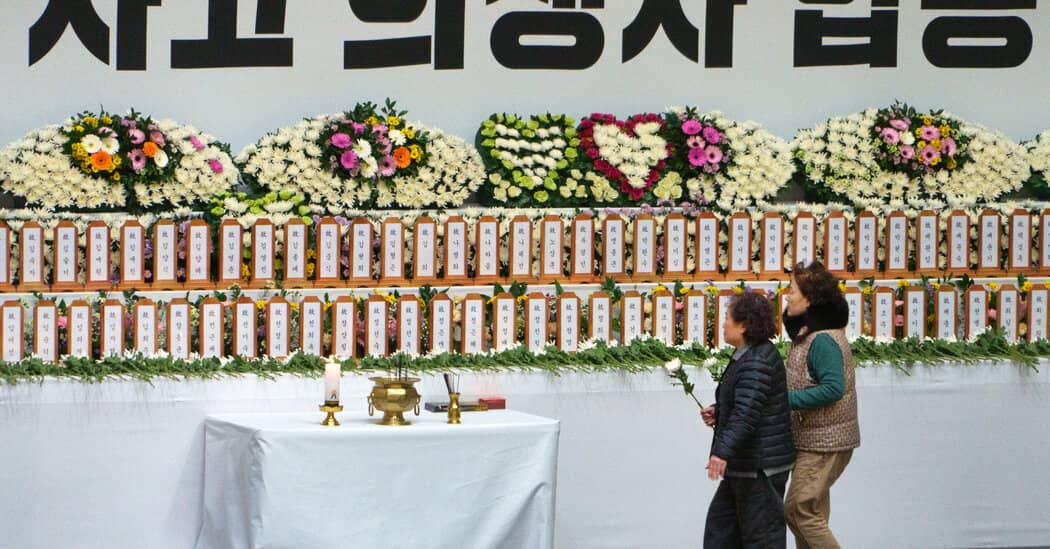The time between when the pilot reported a bird strike and when it crashed could be key to unraveling one of the world’s worst aviation disasters in years.
Already 30 minutes behind schedule, the pilot flying the Jeju Air jet with 181 people on board was preparing to land at his destination in southwestern South Korea on Sunday morning when the control tower warned him about flocks of birds in the area.
Two minutes later, at 8:59 a.m., the pilot reported a “bird strike” and “emergency,” officials said. He told the air traffic control tower at Muan International Airport that he would do “a go-around,” meaning he would abort his first landing attempt and circle in the air to prepare for a second attempt. But he apparently did not have enough time to go all the way around.
Instead, just a minute later, the veteran pilot — with nearly 7,000 flight hours in his career — was approaching the runway from the opposite direction, from north to south. And three minutes later, at 9:03 a.m., his plane, Jeju Air Flight 7C2216, slammed into a concrete structure off the southern end of the runway in a ball of flames.
All but two of the 181 people on board were killed, most of them South Koreans returning home after a Christmas vacation in Thailand. The crash was the worst aviation disaster on South Korean soil and the deadliest worldwide since that of Lion Air Flight 610 in 2018, when all 189 people on board died.
As officials were racing to investigate the crash, a central question has emerged among analysts: What happened during the four minutes between the pilot’s urgent report of bird strike and the plane’s fatal crash?
8:59 a.m.
The pilot reported a bird strike
and issued a distress call.
Seoul
North
SOUTH
KOREA
Muan
9:00 a.m.
After failing to land facing north as
planned, the plane approached
the runway facing south.
Path of turn
unknown
Passenger
terminal
9:02 a.m.
The plane made contact with
the runway near here, without its landing gear lowered.
MUAN
INTERNATIONAL
AIRPORT
The plane skidded
down the runway on its
belly at high speed.
9:03 a.m.
The plane hit a concrete
structure after the end of the
runway and burst into flames.
Airport
perimeter
fence
0.2 miles
MUAN
INTERNATIONAL
AIRPORT
8:59 a.m.
The pilot reported a
bird strike and issued
a distress call.
North
9:00 a.m.
After failing to land facing
north as planned, the
plane approached the
runway facing south.
Path of turn
unknown
9:02 a.m.
The plane made contact with
the runway near here, without
its landing gear lowered.
Passenger
terminal
The plane skidded
down the runway on its
belly at high speed.
9:03 a.m.
The plane hit a concrete
structure after the end of the
runway and burst into flames.
Airport
perimeter
fence
Seoul
SOUTH
KOREA
Muan
0.2 miles
Sources: South Korean transport ministry; satellite image from ESRI
We are having trouble retrieving the article content.
Please enable JavaScript in your browser settings.
Thank you for your patience while we verify access. If you are in Reader mode please exit and your Times account, or for all of The Times.
Thank you for your patience while we verify access.
Want all of The Times? .
Source: www.nytimes.com
